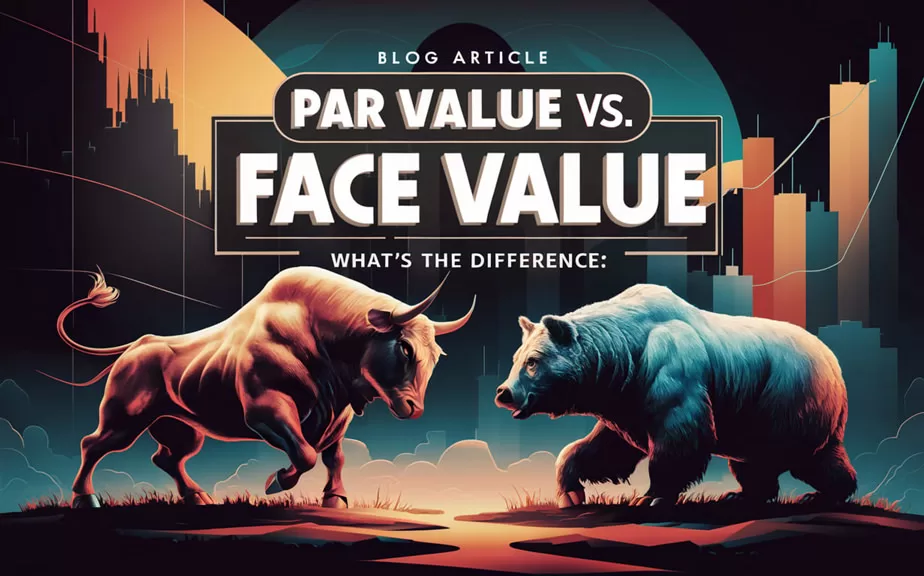Par Value vs. Face Value: An Overview
When discussing the value of financial instruments, par value and face value are essentially interchangeable terms. Both refer to the stated value of a financial instrument at the time it is issued.

Par value is more commonly associated with bonds than with stocks. For bonds, the par value is the amount that the bond issuer agrees to repay to the bondholder at maturity. In essence, a bond represents a promise that the amount loaned to the issuer will be repaid in full.
In the context of stocks, par value is often set to comply with state regulations that prohibit selling stock below its par value. Because of this, most companies set a minimal par value for their stocks. For example, Apple Inc. has a par value of just $0.00001 per share . Not all states require a par value, so not all companies will set one.
Key Takeaways
- The issuer of a financial instrument assigns a par value to it.
- Par value refers to the “face value” of a security; the terms are interchangeable.
- For bonds, par value is crucial as it represents the amount repayable at maturity.
- For stocks, par value is mostly an arbitrary figure to avoid legal issues if the stock price drops below its par value.
Par Value
Bonds are typically issued with par values of either $1,000 or $100. If an investor purchases a bond with a $1,000 par value and a maturity date five years in the future, the issuer is obligated to pay the bondholder $1,000 when the bond matures .
For stocks, the face value is the value per share as stated in the company’s charter. This is the minimum value shareholders must pay per share to fund the business. This value is usually set very low to protect shareholders from liability if the business fails to meet its financial obligations.
Face Value
Face value is typically an arbitrary number set by the issuer and is usually indicated on the company’s balance sheets.
For instance, if a company needs $2 million to build a factory, it might price shares at $1,000 each and issue 2,000 shares to raise the necessary funds. The value of these stocks can increase as the company starts turning profits and generating returns on investments made by the shareholders.
While the face value might seem arbitrary, it is strategically set by the company to achieve real numbers for growth and projected needs.
Special Considerations
Although the face value or par value of securities is important, it has little bearing on the market price—what investors actually pay to buy a bond or a share of stock. The market value of stocks and bonds is determined by trading activities in the open market. Therefore, the market value, influenced by investor psychology and market dynamics, is far more relevant than the stated par or face value.
Frequently Asked Questions
Is Par Value the Same Thing As Face Value? Yes. Both terms refer to the stated value of a security when it is issued by a corporation.
What Is the Difference Between Face Value and Market Value? The par value (face value) of a security remains constant. For example, a bond issued with a par value of $1,000 will always pay that amount at maturity. However, the market price of the bond may fluctuate based on prevailing interest rates. If a bond pays a fixed interest rate of 5% and market rates drop to 2%, the bond’s market price will rise above its face value because it offers a higher yield.
What Is No-Par Value Stock? Some companies issue shares with no nominal par value or with a very low par value, such as $0.01 per share. This nominal value is not indicative of the market price. In some states, setting a minimum par value is mandatory, while companies in other states can issue no-par value stock, which has no stated value.
By understanding these key differences, investors can make more informed decisions about their portfolios, ensuring they are aware of the intrinsic and market-driven factors that affect their investments.
Willie McClellan is a financial analyst and personal finance expert with over 15 years of industry experience. Holding a Master’s degree in Finance from the University of Chicago, Willie has worked with top investment firms, providing insights on market trends and investment strategies. He is passionate about financial education and regularly contributes to leading financial blogs and magazines. When not working, Willie enjoys hiking and spending time with his family.



